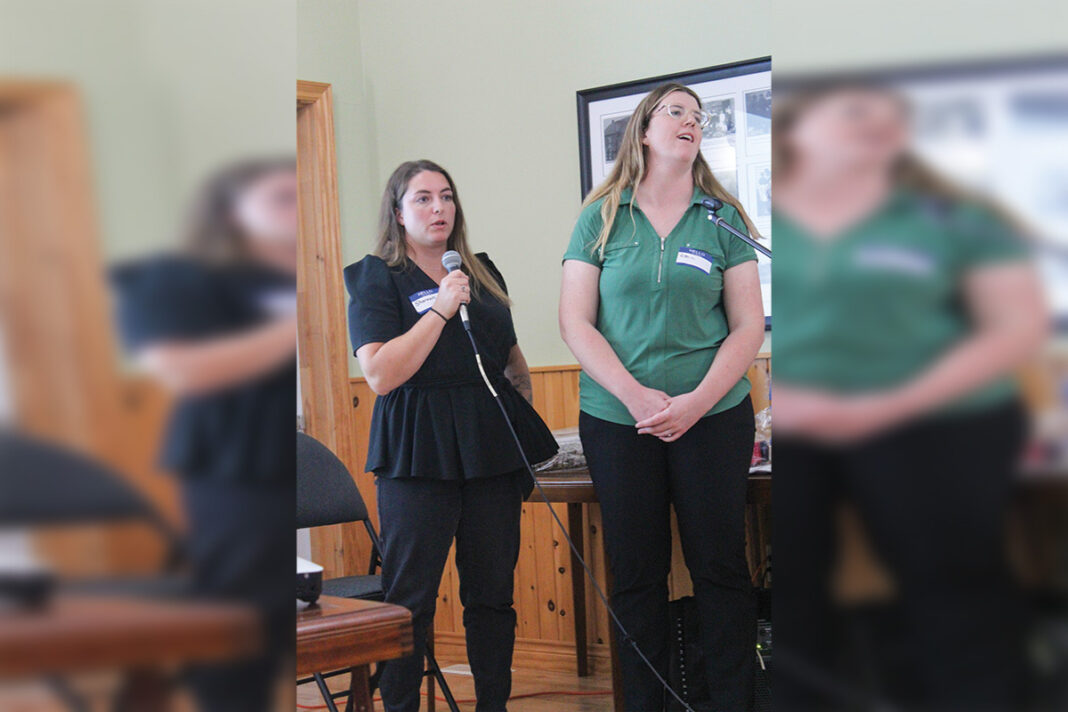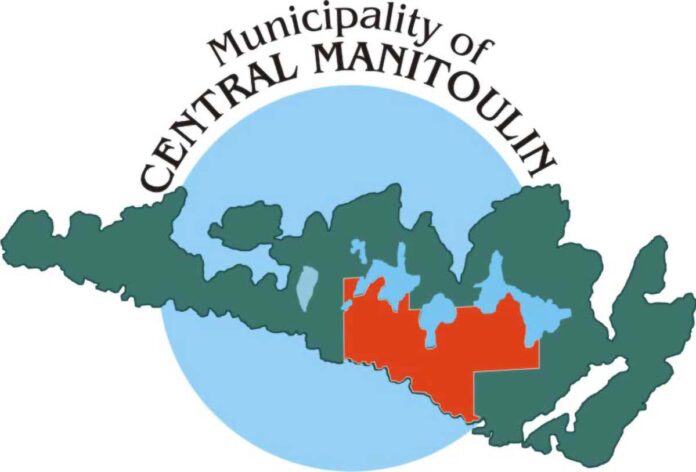Fish collected for other lakes’ stocking; none put back
SANDFIELD—Walleye are not stocked from the Blue Jay Creek Fish Culture Station (BJCFCS) into Lake Manitou, despite the fish being taken out of the lake and stocked in other waters in Ontario, those in attendance at the Lake Manitou Area Association (LMAA) Information Night were told last week. While this could take place someday, it would be a decision based on an assessment by the Sudbury district office of the Ministry of Natural Resources and Forestry (MNRF).
Audience member Ted Williamson asked if any stocking of walleye is carried out by the Blue Jay Creek Fish Culture Station or MNRF in Lake Manitou. “It appears from the numbers you have presented here tonight you are taking the fish out of the local waters, but not putting them back in.”
Victoria Cranston and Shannon Gauthier of the fish culture station explained there are no walleye being stocked in Lake Manitou. The decision for stocking of any fish is made in the Sudbury district office of the MNRF. “They make the decision on stocking of fish,” said Ms. Gauthier. “There is a very high walleye population on Manitoulin Island, and there has been talk of stocking walleye in Lake Manitou over the years,” she added, suggesting LMAA can reach out to the Sudbury district office. “There is the possibility in the future it may happen.”
“I disagree that walleye haven’t been stocked in Lake Manitou,” stated Mr. Williamson. “Walleye have been in the lake for many years.”
“This issue came up at our annual general meeting and we formed a small committee that will be meeting with the MNRF to discuss this and other issues like this,” said Sharon Cooper, secretary of LMAA.
“There is quite a difference in the number of species of fish that are stocked in the lake from year to year,” said one member of the audience.
Mr. Cranston explained that initially, stocking took place every year, but now it normally takes place on a two year on, two years off cycle. “And some years it depends on the availability of fish we have.”
“I don’t understand why walleye are being taken from this lake to places as far as Mississauga?” said one audience member.
Ms. Gauthier noted the walleye in Lake Manitou are a unique genetic strain, and there are lakes that don’t have any walleye. “And some of the lakes are experimental lakes. Lake Manitou is unique for its strain of walleye.” She further explained that Blue Jay is one of the few fish culture stations that raises walleye.
The Blue Jay Creek Fish Culture Station is located in Tehkummah. It is a spring fed water indoor facility. There is also a substation in Sandfield that is lake water fed. The local fish culture station is one of nine in Ontario run by the MNRF.
“The Blue Jay Creek Fish Culture Station was officially opened in 1989,” said Ms. Cranston. It contains a self-guided visitors’ centre and trail and operates on a year-round basis.
Phases of early bass culture at the Sandfield fish culture station goes back to the early 1900s, said Ms. Cranston. She explained Sandfield currently has six operational ponds and a new facility was constructed in 2023 for holding lake trout in the winter, as well as in the main station in Tehkummah.
Fish culture stations raise fish to stock Ontario lakes and rivers by collecting eggs and milt from fish, collecting fluids for genetic sampling, disinfecting the eggs and milt to prevent disease, continued Ms. Cranston. “As well we fertilize and hatch the eggs, and rear and release young fish.”
The fish culture station in Tehkummah raises several fish including walleye, lake trout and rainbow trout. Ms. Cranston noted walleye egg collection occurs in the spring. The nets (12-foot trap nets) are set for a couple of weeks from April-May depending on weather. She showed photos of 18 of the locations that walleye eggs are provided including those in Sudbury, Wawa, Parry Sound and several other locations.
“For Lake Manitou walleye egg collection takes place in the spring. The 12-foot trap nets are set for a couple of weeks any time between April-May depending on the weather. We handle a couple hundred walleye during the collection,” said Ms. Gauthier. “Ripe fish are selected and spawned out.” Bycatch in net is recorded and returned to the lake (400-600 other fish). Eggs are collected from an average of 30 females. Eggs per female depends on the size. Walleye have a larger number of eggs per female 240-000-300,000. Ovarian fluid and milt samples are sent off for fish health testing.
“Of these eggs the percent that survive to the eyed egg stage varies on fertilization but is usually around 90 percent for Blue Jay Creek,” the meeting was told. Once they hatch out, they go into the Sandfield ponds, the intensive walleye tanks at the station and out to community hatchery programs (1.9 million) and other districts.
“In the fall lake trout egg collection occurs. Twelve-foot trap nets are set for a couple of weeks, usually in October,” the meeting was told. Usually, 1,000-1,400 lake trout are handled. Ripe fish are spawned and returned to the lake. Bycatch in net is recorded and returned to the lake (200-400 other fish).
Eggs are collected from an average of 200-300 females. Eggs per female depends on the size. Lake trout have a smaller number of eggs per female at around 2,500. Ovarian fluid and milt samples are sent off for fish health testing. “Of these eggs the percentage that survive to eye up varies on fertilization but is usually around 75 percent,” said Ms. Gauthier. Some of the eggs are shipped out to other fish culture stations. Once hatched the fry are moved into the tanks at BJC to grow until the next season.
“Many locals claim to have caught walleye back in the 1940s,” said Ms. Gauthier. Exactly when and how the introduction occurred is unknown. Anecdotal information would suggest that walleye have been present for over 30 years.
“The first records of Blue Jay Creek catching walleye in Manitou are from fall nets in 1995 during lake trout egg collection,” continued Ms. Gauthier. She noted the broad scale monitoring program began in 2008, with Lake Manitou being survey in 2011, 2016 and 2022.”
“You can help us,” said Ms. Cranston. “You can do so by going on Fish On-line which has a survey option for each lake. Filling out these surveys include information on when you fished, for how long, species and size caught. This information is used to determine angling pressures, species found in lakes etc.”
She further explained, “all fishing licence dollars go the MNRF to support fish and wildlife management, including fish culture and stocking. Spread the word about our facility and feel free to come and visit our fish culture station and see what the station is all about.”





